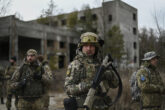October 12, 2022
Mind the Gap, Part 2: The Cross-Strait Potential of China’s Civilian Shipping Has Grown
This piece was originally published by War on the Rocks.
The Chang Da Long is a model of civil-military integration. Built in 2012 as a vehicle carrier, the ship has already demonstrated its ability to carry cars in its commercial capacity and tanks when participating in Chinese military exercises. This, presumably, is what its builders meant when they described it as having a “military heart” with a “civilian shell.”
In August 2021, I discussed how China’s civilian roll-on/roll-off car ferries and vehicle carriers could significantly enhance its ability to launch an amphibious assault on Taiwan. Having updated the numbers and looked more closely at how they translate into military potential, I believe the capacity of China’s civilian fleet is considerably greater and more threatening than it appeared at that time.
China’s civilian roll-on/roll-off vessel fleet enhances the immediacy and the complexity of the invasion threat facing Taiwan. Washington should start preparing now to counter it.
With tensions around Taiwan rising and Russia’s attack against Ukraine on everyone’s mind, analysts continue to debate whether China has — or at least thinks it has — the ability to successfully invade Taiwan. As I argued before, civilian ferries represent an underappreciated source of cross-strait sealift. This challenges the comforting assumption that the Chinese military is constrained by a lack of sufficient traditional amphibious assault ships.
In the past year, the size of China’s civilian ferry and vehicle carrier fleets has grown, and my research has identified additional civilian vessels that could be used for an amphibious invasion. Moreover, given how well-suited China’s roll-on/roll-off vessels are to the task of delivering personnel and vehicles across the Taiwan Strait, they could prove more effective militarily than many imagine. As a result, Washington should work with Taipei now to develop the survivable sea denial forces and rules of engagement that would be necessary to interdict an invasion fleet that exploits the full potential of China’s military-civil fusion.
Read the full article from War on the Rocks.
More from CNAS
-
Defense / Transatlantic Security
When Defense Becomes Destruction: Austria-Hungary’s Mistake and Ukraine’s RiskThis article was originally posted on War on the Rocks. The southeastern Polish city of Przemyśl, with its elegant 19th century Habsburg-era train station, remains one of the ...
By Franz-Stefan Gady
-
Defense / Transatlantic Security
Ukraine’s Catch-22 MomentThis article was originally published in the Financial Times. In Joseph Heller’s wartime classic, Catch-22, the protagonist Yossarian seeks out the US army surgeon Doc Daneeka...
By Franz-Stefan Gady
-
CNAS Insights | Budgetary Own Goals Undermine “Speed and Volume”
On November 7, Secretary of Defense Pete Hegseth laid out a plan to overhaul the Department of Defense’s (DOD’s) acquisition system. Placing an emphasis on delivering new capa...
By Philip Sheers, Carlton Haelig & Stacie Pettyjohn
-
Drones: Who Is Making the New Weapons of War?
From Ukraine and Russia to Gaza and Sudan, drones have become a key weapon of war. Which companies are making them, and profiting from this rapidly expanding but controversial...
By Stacie Pettyjohn




